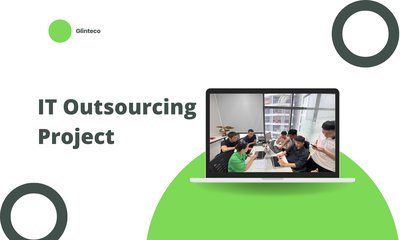トッププロジェクトマネジメント手法
By JoeVu, at: 2023年1月2日12:00
Estimated Reading Time: __READING_TIME__ minutes


プロジェクトマネジメントは、幅広いスキルと知識を必要とする複雑な作業です。プロジェクトマネージャーの仕事は、プロジェクトが時間通りに、予算内で完了することを保証することです。そのためには、マネージャーは、仕事に適切なプロジェクトマネジメント方法論を選択できなければなりません。この記事では、利用可能なさまざまなプロジェクトマネジメント方法論の概要を説明し、その長所と短所について説明します。
1. ウォーターフォール手法
ウォーターフォール手法は、最も古くからある、そして最も広く使用されているプロジェクトマネジメント方法論の1つです。プロジェクト開発への線形アプローチに基づいており、プロジェクトの各段階は、次の段階が始まる前に完了します。この方法は非常に構造化されており、整理されており、範囲、タイムライン、予算が明確に定義されているプロジェクトに適しています。ただし、頻繁な変更が含まれるプロジェクトや、多くの不確実性を含むプロジェクトにはそれほど適していません。
長所:
- 理解しやすく、管理しやすい
- 高度な構造化と整理
- プロセスのすべてのステップを文書化することに優れている
短所:
- 柔軟性や反復処理をあまり許さない厳格なプロセス
- フェーズが完了した後の変更は時間と費用がかかる
- 要求が時間の経過とともに変化する可能性のあるプロジェクトには適さない
2. アジャイル手法
アジャイル手法は、プロジェクトマネジメントに対する反復的かつ増分的なアプローチです。小さく頻繁な変更を通じてプロジェクトを継続的に改善するという考えに基づいています。この方法は非常に柔軟性があり、プロジェクトへの頻繁な変更と更新を可能にします。多くの不確実性を含むプロジェクトや、急速に変化する要件を含むプロジェクトに適しています。ただし、高度な構造と組織が必要なプロジェクトにはそれほど適していない可能性があります。
長所:
- 要件の変更に対する柔軟性と適応性を提供します。
- 機能するソフトウェアの迅速な提供を可能にします。
- 利害関係者間の協調とコミュニケーションを促進します。
- 顧客満足度とフィードバックを重視します。
短所:
- 計画と管理が困難な場合があります。
- プロジェクトの時間とコストを見積もることが困難な場合があります。
- プロジェクトの範囲と目的を定義することが困難な場合があります。
- 適切に管理されない場合、コードの品質低下につながる可能性があります。
3. スクラム手法
スクラム手法は、プロジェクトマネジメントに対するアジャイルアプローチです。大規模なプロジェクトをより小さく、より管理しやすい部分に分割するという考えに基づいています。この方法は非常に反復的で、小さく頻繁な変更を通じて継続的な改善を促進します。多くの不確実性や急速に変化する要件を含むプロジェクトに適しています。ただし、高度な構造と組織が必要なプロジェクトにはそれほど適していない可能性があります。
長所:
- 価値を迅速に提供する
- 柔軟性があり、変化する要件に容易に適応する
- チームの協調性を高める
- 開発プロセスの可視性を高める
- 顧客満足度を高める
短所:
- チームから多くの時間が必要となる
- 混沌とした、非組織的な可能性がある
- チームから高度な規律が必要となる
- 短いイテレーションにより遅延が発生する可能性がある
- チームが適切に訓練されていない場合、管理が困難になる可能性がある
4. PMI / PMBOK
PMI / PMBOK(Project Management Institute / Project Management Body of Knowledge)は、プロジェクトマネジメントに関する包括的な標準とガイドラインのセットです。プロジェクトの開発と管理に体系的なアプローチを使用するという考えに基づいています。この方法は非常に構造化されており、整理されており、高度な構造と組織が必要なプロジェクトに適しています。ただし、多くの不確実性を含むプロジェクトや、急速に変化する要件を含むプロジェクトにはそれほど適していない可能性があります。
長所:
- プロジェクトの管理方法に関する標準化とガイダンスを提供する
- 異なる組織間で使用できる共通の言語とプロセスを概説する
- プロジェクトチームが期待されることを理解するのに役立つ
- プロジェクトのパフォーマンスを評価するためのフレームワークを提供する
短所:
- 実装コストがかかる可能性がある
- 学習と適用に時間がかかる可能性がある
- プロジェクトマネジメントアプローチにおいて、柔軟性に欠け、硬直したものになる可能性がある
- プロジェクトマネジメントにおける創造性と革新の欠如につながる可能性がある
5. クリティカルパス法(CPM)
クリティカルパス法(CPM)は、プロジェクトで最も重要なタスクを特定し、それに応じて優先順位を付けるために使用されるプロジェクトマネジメント手法です。この方法は非常に構造化されており、整理されており、範囲、タイムライン、予算が明確に定義されているプロジェクトに適しています。ただし、多くの不確実性を含むプロジェクトや、急速に変化する要件を含むプロジェクトにはそれほど適していない可能性があります。
長所:
- プロジェクトの締め切りを守るために完了しなければならない最も重要なタスクを特定するのに役立ちます。
- リソースのより良い管理と、主要なタスクへのリソースの割り当てを可能にします。
- 潜在的な問題と遅延を発生する前に特定するのに役立ちます。
- プロジェクトの依存関係をよりよく理解することを可能にします。
短所:
- 設定と管理に時間がかかる可能性があります。
- プロジェクトの範囲または予算の潜在的な変更を考慮していません。
- 不確定要素や予測不可能な要素が多いプロジェクトには適していません。
6. カンバン手法
カンバン手法は、プロジェクトマネジメントに対するアジャイルアプローチです。タスクの進捗状況を追跡するために「視覚的なボード」を使用するという考えに基づいています。この方法は非常に反復的で、小さく頻繁な変更を通じて継続的な改善を促進します。多くの不確実性や急速に変化する要件を含むプロジェクトに適しています。ただし、高度な構造と組織が必要なプロジェクトにはそれほど適していない可能性があります。
長所:
- 生産性と効率性を高める
- コラボレーションとコミュニケーションに役立つ
- 柔軟性と適応性を促進する
- タスクの優先順位付けに役立つ
短所:
- 意思疎通の誤りの可能性
- 実装が難しい可能性がある
- 進行中のタスクの可視性が限られている
7. エクストリームプログラミング(XP)
エクストリームプログラミング(XP)は、プロジェクトマネジメントに対するアジャイルアプローチです。少量ずつコードを記述し、コードに頻繁に変更を加えるという考えに基づいています。この方法は非常に反復的で、小さく頻繁な変更を通じて継続的な改善を促進します。多くの不確実性や急速に変化する要件を含むプロジェクトに適しています。ただし、高度な構造と組織が必要なプロジェクトにはそれほど適していない可能性があります。
長所:
- 顧客のニーズを満たすソフトウェアを提供することにより、顧客満足度に重点を置いています。
- 開発者と顧客間の頻繁なコミュニケーションを促進します。
- 変更を迅速かつ容易に行うことができるようにすることで、開発プロセスに柔軟性を提供します。
- ソフトウェア開発の迅速な反復を可能にします。
短所:
- 大規模な組織では実装が難しい場合があります。
- コードベースの増加に伴い、保守が困難になる可能性があります。
- 開発者が方法論を理解して実装するには、追加のトレーニングが必要になる場合があります。
- 適切に管理されない場合、ソフトウェアの肥大化につながる可能性があります。
8. リーン手法
リーン手法は、プロジェクトマネジメントに対するプロセス改善アプローチです。無駄をなくし、効率を高めるという考えに基づいています。この方法は非常に構造化されており、整理されており、範囲、タイムライン、予算が明確に定義されているプロジェクトに適しています。ただし、多くの不確実性を含むプロジェクトや、急速に変化する要件を含むプロジェクトにはそれほど適していない可能性があります。
長所:
- リソースの使用を最適化する:リーン手法は、無駄をなくし、効率を高めることに重点を置いており、リソースの使用を最適化します。
- 顧客満足度を高める:リーン手法は、顧客のニーズと満足度を満たすことに重点を置いており、顧客ロイヤルティの向上につながる可能性があります。
- 品質を向上させる:リーン手法は、無駄と欠陥をなくすことに重点を置いており、品質の向上につながる可能性があります。
短所:
- 実装が困難:リーン手法には、時間とリソースの大きな投資が必要であり、実装が困難になる可能性があります。
- 常に適用できるわけではない:リーン手法は、あらゆる種類のビジネスに常に適用できるとは限らず、特定の種類のビジネスには適していない可能性があります。
- 従業員の抵抗につながる可能性がある:リーン手法の実装は、既存のプロセスと文化の変化により、従業員の抵抗につながる可能性があります。
9. シックスシグマ
シックスシグマは、プロジェクトマネジメントに対するプロセス改善アプローチです。ばらつきを減らし、品質を高めるという考えに基づいています。この方法は非常に構造化されており、整理されており、範囲、タイムライン、予算が明確に定義されているプロジェクトに適しています。ただし、多くの不確実性を含むプロジェクトや、急速に変化する要件を含むプロジェクトにはそれほど適していない可能性があります。
長所:
- プロセスのばらつきとエラーを減らすことで品質を向上させる
- コスト削減と顧客満足度の向上につながる可能性がある
- プロセス改善のための構造化された方法論を提供する
- さまざまな業界や組織に容易に適応できる
短所:
- 実装と維持に費用がかかる可能性がある
- かなりのリソースのコミットメントが必要
- 分散型構造の組織には適応が難しい可能性がある
- トップマネジメントからの強いコミットメントがないと維持が困難になる可能性がある
10. PRINCE2
PRINCE2は、英国の政府商務省によって開発されたプロジェクトマネジメント方法論です。構造化されたプロジェクトマネジメント方法と実践者認定プログラムであり、制御され組織化された方法でプロジェクトを提供することを目的としています。
長所:
- どの業界でも使用できる標準化されたプロジェクトマネジメントアプローチです。
- どのタイプのプロジェクトにも適合できる柔軟なフレームワークです。
- プロジェクトチームに明確なガイダンスと方向性を提供します。
- プロジェクトに関連するリスクを特定および管理するのに役立ちます。
- 時間通りに、予算内でプロジェクトを提供するために使用できる構造化されたプロジェクトマネジメントアプローチを提供します。
短所:
- シンプルなアプローチではなく、理解して実装するには多くの努力が必要です。
- 特定の状況では硬直して非柔軟になる可能性があります。
- 小規模なプロジェクトには適していません。
- 実装と維持に費用がかかる可能性があります。




